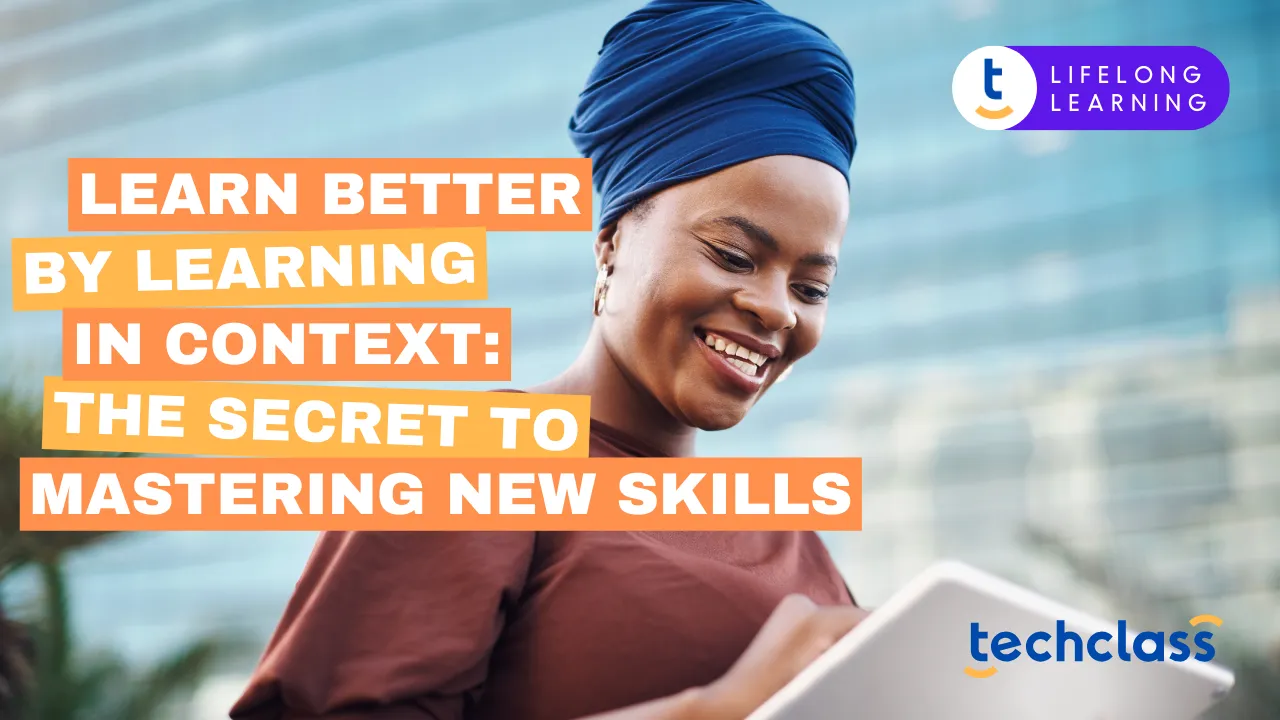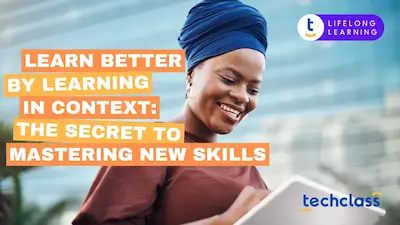
Have you ever tried learning something new, say, coding, digital design, or even a new language, only to feel lost when trying to use it in a real situation?
You’re not alone.
For many learners, one of the biggest hurdles in mastering new skills is the disconnect between theory and practice. You can watch videos, read guides, or take a course, but when it comes time to apply what you’ve learned, it often feels like starting from scratch.
That’s where contextual learning comes in.
Whether you’re reskilling for a career shift, diving into a new hobby, or just learning out of pure curiosity, contextual learning gives you the tools to truly understand, remember, and most importantly, use what you learn.
Contextual learning is an approach that ties what you're learning to how and where you’ll actually use it.
Rather than just absorbing information passively, you apply it actively in situations that mirror real life. Imagine learning a new software by solving a real business challenge, or studying nutrition by planning your own meals and shopping with a purpose.
This kind of learning connects new information to your personal goals, experiences, and environment, making it more practical, memorable, and meaningful.
You don’t want to memorize abstract concepts or theoretical jargon, you want to learn things that work, and apply them immediately.
Here’s how contextual learning supports your journey:
Instead of memorizing rules or watching demonstrations, you’ll learn by doing. This hands-on approach helps you build confidence and competence faster. For example, learning photography by practicing on your own camera and editing real shots is far more effective than reading about aperture or ISO in a textbook.
Studies show that people who engage in contextual learning retain up to 40% more information, because your brain is wired to remember things that feel relevant and connected to real experiences. The material isn’t just heard, it’s experienced. Learners engage more senses, make personal connections, and see firsthand why the knowledge matters. This is especially crucial in complex skill areas such as software adoption, compliance training, and industry-specific procedures where understanding the how is just as important as the why.
When learning is broken down into real-life steps that build on one another, even complex subjects (like coding, finance, or health science) feel more achievable.
When you clearly see how a new skill fits into your goals, starting a side hustle, improving your health, or creating something meaningful, you’re far more likely to stay engaged.
Here’s what contextual learning might look like in your own self-education:
In each case, you’re not just learning the skill, you’re using it while you learn it. That’s contextual learning.
The power of contextual learning lies not just in immediate application but also in its role in lifelong skill development. You don’t need a classroom or formal curriculum to benefit from contextual learning. Here’s how to get started:
When it comes to mastering new skills as an adult, it’s easy to fall into the trap of consuming more and more information, books, videos, online courses, hoping something will finally stick. But the truth is, how you learn matters far more than what you learn. Context gives meaning to information. Without it, content is just noise. Contextual learning anchors new knowledge in real-life situations, helping you immediately understand why it matters and how to use it. This relevance not only boosts motivation but also improves memory and skill transfer. When learning is tied to a goal you care about or a problem you’re actively trying to solve, it becomes useful, memorable, and, most importantly, actionable. That’s the difference between learning that fades and learning that lasts.
Contextual learning empowers you to be more than just a passive student. You become a creator, a problem-solver, and a doer, building real, lasting skills through meaningful experiences. And that’s the beauty of learning: you get to shape it around your life, your needs, and your goals and build the skills you want. So whether you’re picking up a new hobby, preparing for a new role, or simply chasing curiosity, learn in context. It’s the fastest way to go from “I get it” to “I can do it.”
Start by picking one skill you want to develop. Then, find a real-world challenge or project that lets you apply it. Learn by doing, reflect on what worked, and keep building. Because the best kind of learning doesn’t just stay in your head, it shows up in your life.


